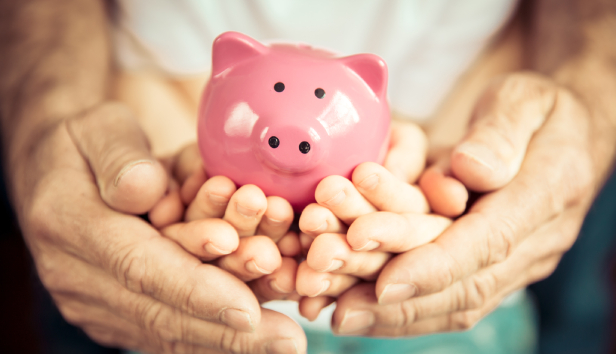
This article is for general guidance only and is not financial or professional advice. Any links are for your own information, and do not constitute any form of recommendation by Saga. You should not solely rely on this information to make any decisions, and consider seeking independent professional advice. All figures and information in this article are correct at the time of publishing, but laws, entitlements, tax treatments and allowances may change in the future.
Reaching state pension age isn’t, unfortunately, the end of tax. You may still pay tax depending on your income and where it comes from. Whether you’re still earning or fully retired, if your income for the year exceeds the personal allowance – currently £12,570 – you’ll need to pay tax.
We’ll explain all you need to know about what you pay and how to minimise your bill.
What’s on this page?
More retirees than ever are now paying tax on their income, thanks to the combination of high inflation and income tax allowances that have been frozen at their current level since 2021 – and will remain frozen until 2028. According to the Institute of Fiscal Studies (IFS), more than two thirds (65%) of over-65s pay income tax – up from 48% in 2010.
Megan Rimmer, chartered financial planner at Quilter Cheviot, says: “In the UK, when you retire, it's not the end of your relationship with the taxman. Even after you've clocked out for the last time, any income you receive, whether from pensions, savings, or investments, might still be taxable.”
The good news is that you’ll no longer have to pay national insurance contributions once you reach pension age. (If you’re self-employed, you stop paying Class 4 national insurance from the start of the tax year after you reach state pension age.)
While the tax burden on retirees is undoubtedly growing, Rimmer points out it’s often possible for them to manage their income tax costs. “The amount of tax you pay and how you're taxed can vary significantly depending on how you access your pension and manage your other assets,” she says. However, to keep your bill down and make informed choices, it’s essential you understand how your money will be taxed.
Most people can currently receive income of up to £12,570 (the personal allowance) without paying any income tax.
Income over £12,570, and up to £50,270, is taxed at the basic rate (20%), with the higher rate (40%) kicking in on earnings between £50,271 and £125,140. Income above that is taxed at the additional rate (45%).
It’s also important to note that if your income goes above £100,000, your personal allowance is gradually withdrawn , and is completely lost once your income hits £125,140, meaning you’ll pay even more tax as your allowance reduces.
Live in Scotland? Different rates and allowances apply for income. However, savings and dividends are taxed the same as the rest of the UK.
Once you’re no longer working, the chances are your pensions will make up the bulk of your income. You can usually take up to 25% of your pot as a tax-free lump sum (there is a cap of £268,275 on the tax-free amount, though that only affects the minority of people with the largest pots).
With a defined benefit pension (those which offer a guaranteed income for life, which you’ll probably have if you worked in the public sector), the rest of the money you receive into your bank account throughout the year will be taxed as normal income. The amount of tax to pay will depend on how much you get.
It’s not quite so straightforward with defined contribution pensions. These are the schemes many people will have, if they’ve paid into a private sector workplace or personal pension over the years. With these, you’re responsible for turning your pot into income.
The amount of tax you pay on your withdrawals will depend on:
That means if you buy an annuity or make drawdown withdrawals – after you have taken your tax-free lump sum – that money will become taxable.
There’s also a risk of over-taxation when you take your first flexible withdrawal from your pension (not including the tax-free lump sum). This is a common problem: the latest figures show that around 60,000 people were wrongly overcharged tax on their pension withdrawals in 2023-24. The average refund was £3,332. You’ll be able to claim the overpayment back, or you can avoid the issue from arising – read more about how to avoid emergency pension over-taxation.
There are many ways you can take your pension, so it’s highly recommended that you speak to a professional financial adviser. They can guide you on the best way to access your pension and help create a plan that fits your personal circumstances.
Although the way defined contribution pensions are taxed is arguably a bit confusing, their flexibility means they offer opportunities to manage your income tax effectively.
Clare Moffat, pensions specialist at Royal London, says: “If you have a defined contribution pension and you are thinking about moving into drawdown, then you can minimise the amount of tax that you pay.
“That's because you choose your income level and can keep your drawdown income below the [tax] threshold.
“This also works as you approach state pension age. For example, you might have been taking £15,000 a year from age 60 but state pension is about to start. If £15,000 is enough then you could reduce the amount of drawdown income, so when added to the state pension, it still totals £15,000.”
If you have money in ISAs, you can also use tax-free withdrawals to boost your retirement income without increasing your tax bill.
For example, let's say someone needs an income of £20,000 a year and decides to take all that money from pensions. After their personal allowance has been deducted (£12,570), they would pay basic rate tax on £7,430 a year, which would work out as £1,486. However, if they instead took £15,000 from pensions and £5,000 from ISAs, they would still have £20,000 a year, but would only pay tax on £2,430, giving them a tax bill of just £486. This would result in a tax saving of £1,000.
These are just examples of what could be done. It's important to speak to a professional advisor who can help you work out the best choice for your own tax situation.
.jpg?sc=max&mw=800&h=450&la=en&h=731&w=1300&hash=AC26B7D40696FC6A82F80D617E62521A)
It’s also important to note that if you have savings or investments, they could be subject to tax as well.
Interest from savings is taxable, but you have a personal savings allowance (unless you are an additional-rate taxpayer), meaning a certain amount of interest income is tax-free. The allowance is £1,000 for basic rate taxpayers and £500 for higher rate taxpayers, with no allowance for additional rate taxpayers. There’s also the starting rate for savings, which can increase your allowance by up to £5,000 for those with low non-savings income.
“Income from investments, such as dividends from shares, is also taxable,” adds Rimmer. “There’s a tax-free dividend allowance of £500 a year and anything above this is taxed at rates depending on your income tax band.
“Remember, capital gains (profit from selling investments or property) may also be subject to capital gains tax (CGT) if they exceed your annual tax-free allowance of £3,000 a year.” You can shelter investments from tax by holding them in ISAs, where they will be protected from both dividend tax and CGT.
If you’re married or in a civil partnership, you might also be able to take advantage of the marriage allowance. This is helpful for couples where one person doesn’t pay income tax, and the other pays basic-rate tax. This allows one spouse (who has an income below £12,570) to transfer £1,260 of their personal allowance, to the other. This can save £252 a year in tax.
There’s a separate and more generous married couple’s allowance for couples where at least one partner was born before 6 April 1935. This could reduce your tax bill by between £436 and £1,127 a year.
Even if you aren’t eligible for one of these allowances, there might still be opportunities for married couples to save tax. For example, you could consider transferring assets to a spouse or civil partner, ensuring you take advantage of both your CGT allowances.
Alternatively, by paying careful attention to your pension withdrawals you can be smart with how much you each take from a pension. This ensures you keep your individual incomes below tax thresholds, preventing one of you paying a higher rate of tax than necessary.
Sometimes tax in retirement can seem more complicated than it was when you were working – especially if you have a defined contribution pension or need to start cashing in other investments. Easy access to pensions, coupled with shrinking allowances for dividend tax and CGT, means it’s not hard to trigger a surprise tax bill.
For this reason, it’s worth seeking professional financial advice to ensure you don’t pay any more tax than you need. You can get free guidance on what to do with your pension from Pension Wise. We’ve also got information about where you can get free financial advice and how to choose a financial adviser.

There’s billions sitting unclaimed in shares and dividends – find out if any belongs to you.

From their first savings account to their first home, find out how your gifts can make the biggest impact for your grandchildren
.jpg?la=en&h=354&w=616&hash=653168623B92F3457D40ACA115D37B3E)

.jpg?la=en&h=354&w=616&hash=458B0288E9852F4B63A433E2FDD375E7)



We're here to help you make the most with your money. With a rage of financial services designed with over 50s in mind.